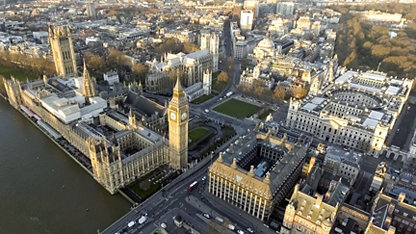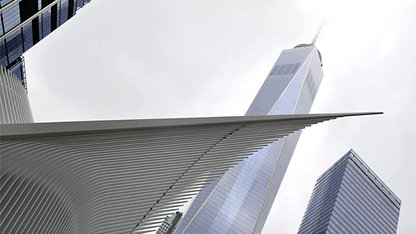Modern Methods of Construction (MMC) is gathering pace and represents part of the solution to the UK's construction shortfall. Supply across the residential sector is failing to keep up with demand and struggling to fulfil the Government's 300,000 new homes target. But just building more homes off-site isn't panacea.
Following the RICS policy position, "Modern Methods of Construction: a forward-thinking solution to the housing crisis?", and RICS' call on government to review building methods, RICS Matrics convened industry professionals for an insightful discussion to examine the future of our construction industry and the role MMC can play.
Hosted by AECOM and chaired by Mark Farmer, Founding Director and CEO of Cast Consulting the panel event - including Ash Patel, Project Director at Laing O'Rourke, Ulrik Banner, Board Executive of LetsBuild, John Lewis, Head of Commercial Sector UK & Ireland at AECOM and Chris Choa, Managing Director at AECOM – pulled together a variety of viewpoints under four key areas: DfMA/off-site construction; outcome-based planning; technology and collaboration and talent; to pinpoint the key aims to help the UK construction sector flourish.
The aim of built environment professionals
Mark Farmer, author of 'Modernise or Die', highlighted that the aim of the built environment is to enable society to improve; whether it's housing, infrastructure or commercial construction. The future of the built environment can't be discussed without considering its effect on society. Mr Farmer spoke of the industry being a tense space to be in currently; there's a lack of public trust, following Grenfell and Carillion, and the future lies in recognising these issues and moving into a space where the industry can prove to society that it can create real social value.
DfMA/Off-site construction
Digitally-enabled DfMA and off-site manufacturing are impressively optimising the build process. A key project example given by Ash Patel was the panels were created for Crossrail stations at Liverpool Street, Tottenham Court Road and Whitechapel. There were 32,000 panels required for this that were designed for manufacture using 2,200 base models and 5,500 variants - of the 32,000 less than 50 panels had to be remade. This could never have been delivered with more traditional manual methods.
Digital technology is unlocking an off-site revolution – particularly in the sector of volumetric housing. There is a real demand for high quality housing that can be delivered consistently and at speed - 95% of AECOM's modular solution can be built off-site, making it 50% faster to deliver than traditional on-site construction, the assembly process is simplified and de-risked, and the quality is controlled. As the building systems are optimised for the solution this results in excellent energy performance and lower running costs.
The speed and efficiency of DfMA / off-site construction obviously has huge benefits in assisting our industry in delivering on ambitious government housing and infrastructure targets. However, there are also numerous social value benefits; buildings can become 100% carbon neutral, produce less waste and pollution, and can be delivered with less local disruption.
Outcome-based planning
DfMA and off-site construction may be the future of construction, but the real question is how it will be used. What kind of city do we want to create? Why do we live in the city we live? What makes it what it is? Chris Choa left the audience pondering; we know what it can do but the question is what do we want it to do? This outcome-based planning will inevitably affect the bigger picture and the future of the construction industry.
Technology and collaboration
The future of construction technologically is focussed on cloud-based collaboration platforms. The key aims of which are; leveraging data to design more intelligently, and developing seamlessly connected construction so we can deliver buildings and spaces more efficiently.
The industry will need a transformative leap from working in silos and not sharing data, to a collaborative industry where companies share data by default. We're in the age of the customer; and construction technology is giving us the ability to shape development to their specific needs and wants. This as well as sustainability, urbanisation and emerging technologies like AI and machine learning are all key drivers that will shape the industry. In Ulrik's view, the future will be safer, more efficient and more transparent.
Talent
The demographic of the workforce is changing, there is an aging workforce as well as societal change, and it's becoming more of a challenge to get young people into the construction industry due to misconceptions about what it's like to work in the industry. The key to changing this for the future is companies investing in research and development, showing a structured career path and enabling talent to thrive through continued training and advancement opportunities. Investing in people in this way is paramount in changing the future of construction, especially as technology and collaboration becomes vital to the way we deliver.
What needs to be done to improve the future of construction?
- The future of construction is firmly rooted in leveraging the benefits of digital technology. However, to do this, there has to be an emphasis placed on investment, learning and development. Attracting and retaining talent starts in schools and universities, as well as focussing on upskilling people already in the industry to ensure they are able to utilise the latest digital tools.
- Off-site construction is the future as it can speed up the process as well as de-risking it. This approach also brings the added benefits of social value, sustainability and higher quality standards.
- The panel advocated that the government has an important role in raising standards and driving industry change.
- Collaboration will continue to be made easier; using cloud-based software it's easier to communicate as well as show the client visualisations earlier in the process/ throughout the process.
- As well as considering what is possible, it's important to consider what we want to achieve; how can we ensure that future construction shapes our cities for the better?














